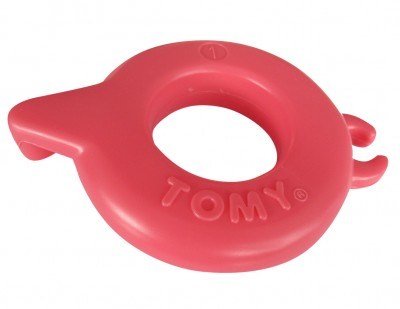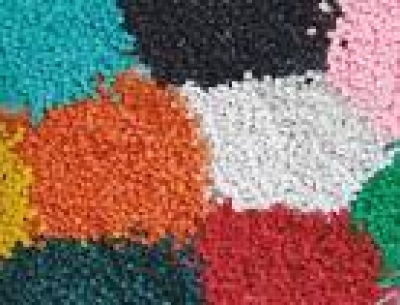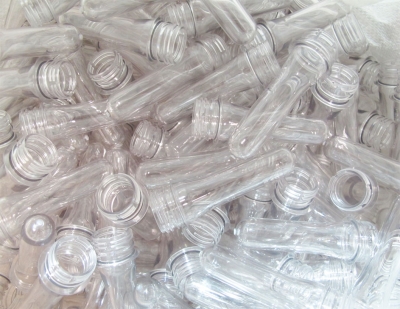Features and use of plastics: PE, PP, PVC, PC, PET
1. PE (Polyethylene)
Polyethylene (PE) is the most commonly used plastic polymer in the world which is applied in almost field in our life. Its primary use is in packaging (plastic bag, plastic films…)
 a) Features:
a) Features:
– Transparent, slightly dim light, shiny surface & flexible.
– High ability of waterproof and moisture-proof
– Weakness of gas-proofing such as: O2, CO2, N2 and less greasy.
– Excellent heat seal ability (below 230o C) for a short time.
– Being puffed and damaged when exposed to aromatic oils or detergents as alcohol, acetone, H2O2…
– Allowing gas & odor permeation through, so PE can also absorb & keep odors, and also the smell can be absorbed by the food contained, causing loss of valuable experience of the product concerned.
b) Use:
-Be applied in producing bags & bins (can) with integration range from 1 to 20 liters with different thickness.
– Be applied in producing of bottle caps. Because of its ability for odor absorption, bottle caps made of PE must be stored in the environment without odors.
 c) Classification & recognition HDPE, LDPE, LLDPE plastic bags
c) Classification & recognition HDPE, LDPE, LLDPE plastic bags
Polyethylene is classified into several different categories based mostly on its density. With regard to solid volumes, the most important polyethylene grades are HDPE, LLDPE and LDPE.
Plastic bags made from LDPE and LLDPE, it is very clear, strong, smooth and soft and not hears any noise when touching the bag.
Plastic bags made from HDPE, it is hard, strong, and not transparent as LDPE and can hear noise when touching the bag.
HDPE: high density polyethylene
LDPE: low density polyethylene
LLDPE: Linear low density polyethylene
MDPE: Medium density polyethylene
2. PP (Polypropylene)
Polypropylene is extremely chemically resistant and almost completely impervious to water. Black has the best UV resistance and is increasingly used in the construction industry.
a) Features:
– High ability of tensile and tear property, quite stiffer but not flexible like PE, unable to be stretched for long, so it was made into yarn. Especially, less ability of tear property when there is a cut or a small puncture wound.
– Transparent with gloss surface. Apply for printing industry with clear definition.
– Ability of heat pressure over 100o C. In comparison with PE – it can damage to exterior laminated structure, so it is rarely used as inner layer.
– Creating a greater degree of crystallinity, making PP stiffer and more resistant to creep (the tendency to flow under stress) as compared to polyethylene (PE)…
– Almost completely impervious to water: O2, steam, grease and other gases.
b) Use:
– Apply for food packaging, requirement for anti-oxidants is preferable.
– Be applied in producing thread & food packaging containers in bulk.
– PP is also used to produce the outer membrane for laminated membrane to increase its air permeability, water-vapor permeability, enhance printing capabilities and easy to tear the packaging (because of its available cut) and increase it’s highly gloss for packaging.
– Application: automotive bumpers, chemical tanks, cable insulation, battery boxes, bottles, petrol cans, indoor and outdoor carpets, carpet fibers…
3. PVC (Polyvinylchloride):
– Poly-vinyl-chloride (PVC) has good resistance to chemical and solvent attack. Its vinyl content gives it good tensile strength and some grades are flexible
– Previous PVC Products (from 1920 onwards) were commonly used, but now PE. Currently, PP is almost used in cables, drainage pipe, raincoat, house-hold plastic film…
– PVC contains vinylchoride, commonly known as VCM, is capable of causing cancer (discovered 1970)
a) Features:
Some weaknesses of PVC packaging:
– Density: 1.4 g/cm2 higher than PE and PP; so it takes more PVC material than PE or PP to get membrane with the same thickness
– Less gas-proofing, water-proofing than PE, PP.
– Inflexible like PE or PP. So, it’s necessary to add additives to make soft PVC for packaging.
– Plasticized PVC by additives will be hard & brittle after a period of time.
– Despite controlling the VCM residue less than 1 pm- safety level allowed, in Europe, PVC is not used as food packaging even its price is cheaper than other plastic packaging.
b) Use:
– Be used in shrink label for bottles, plastic jar or shrink wrap for foods preservation in a short time as raw meat, fresh vegetables…
– Also, PVC is used to make many household items as well as the other product types in other industries.
4. PC (Polycarbonates):
Polycarbonate has good weather and UV resistance, with transparency levels almost good as acrylic.
a) Features:
– Much higher ability of air & gas permeability than PE, PVC but PP
– Transparent, hardness, abrasion resistant and not affected by the composition of the food.
– Highly refractory ability (above 100oC).
b) Use:
– Ability of high temperature withstand, PC is used in bottles, lids industries needing for sterilized food.
– PC membrane has ability of gas-proofing, but PC price is 3 times higher than PP, PET so it is rarely used.
 5. PET (Polyethylene terephthalate):
5. PET (Polyethylene terephthalate):
PET has a good thermal stability, good electrical properties, very low water absorption, and excellent surface properties.
a) Features:
PET is an important type of food packaging which can create membrane or shaped bottles because of following properties:
– High ability of tensile and tear property, quite rigid but not flexible like PE
– Be able to be suffered by the impact of force and tear, high hardness, abrasion resistant.
– Be suitable for food environment.
– Transparent.
– Higher gas-proofing (O2, CO2) than other plastic types.
– The chemical structure of PET circuit is unchanged even heated at 200 ° C or refrigerated at – 90oC, & the gas-proofing also remains until 100 ° C.
b) Use:
Due to its strongly waterproofing, PET is used to make bottles, pure water bottles, carbonated soft drinks…
Share article:
Copyright @ 2015 - 0. All rights reserved.
Tel: (+84) 225.3798.886 | Fax: (+84) 225.3798.887
E-mail: hr03@vanlongplastic.com.vn | Website: http://www.vanlongplastic.com.vn/